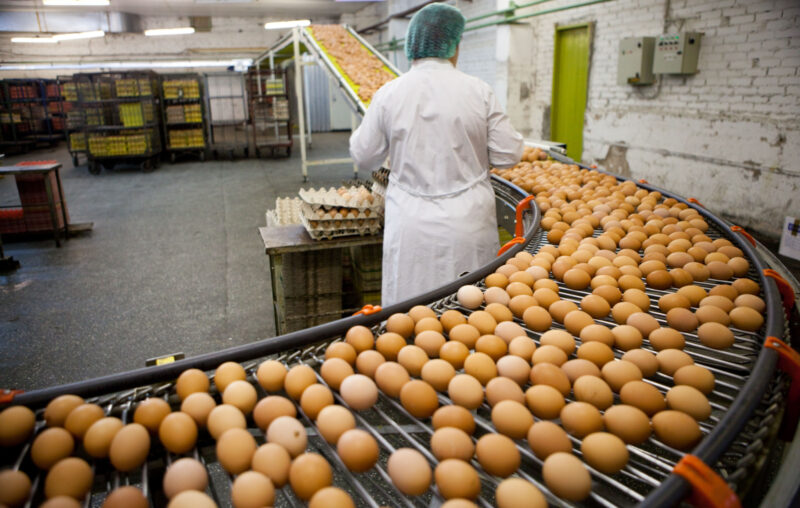Inflation: It’s Not the Supply Side

Many influential figures claim that supply-side improvements explain easing price pressures. This view is especially common among those affiliated with the Biden administration. A few weeks ago, Treasury Secretary Janet Yellen said in an interview that “supply-chain issues that resulted from the pandemic…seem to be healing, and as that happened, inflation has moved down.” She echoed this claim in a widely read opinion piece, arguing that Bidenomics “helped ease supply-chain bottlenecks that had contributed to a surge in goods inflation.” This is quickly becoming the accepted explanation for ongoing disinflation.
But there’s a gaping hole in this story: The economic theory that underlies it makes predictions that are clearly inconsistent with the data. While improved productive conditions can sometimes cause prices to grow more slowly, or even fall, they aren’t the main reason inflation is slowing now.
To begin, notice that the supply-side disinflation story is symmetric: If production problems caused prices to rise, then fixing those problems should cause prices to fall. Certainly there were production bottlenecks and other supply difficulties from the COVID-19 pandemic that lasted a while. The producer price index for deep sea freight rose more than 45 percent from January 2020 to September 2022. The IMF’s global energy price index skyrocketed nearly 200 percent over the same period. But here’s where the trouble starts. Although prices for shipping and energy have indeed fallen from their respective peaks, prices for most goods have continued to rise. The economy has not experienced sustained deflation sufficient to offset the extraordinary inflation realized in 2021 and 2022. Instead, we’ve mostly experienced a slowdown in the rate of price increases. This is most welcome, but it is not what the supply-side theory predicts.
The most recent month is an exception. The Personal Consumption Expenditures Price Index (PCEPI) declined slightly in November. But the decline is very small compared to the overall run up in prices. Note that prices are up year-over-year, as well as over the last quarter. And no one expects the deflation will continue. Moreover, the timing of the recent fall in prices doesn’t match the supply-siders’ argument, which implies that goods prices should have fallen before now.
Even if we eventually experience sustained deflation, the arithmetic of the supply-side account just doesn’t add up. Economists have long known that inflation is caused by total demand (spending) growing faster than total supply (production). In fact, we can be much more precise: For a given rate of total demand growth, a 1 percent increase in total supply growth should cause the inflation rate to decrease by 1 percent. This simple math poses a big problem for supply-siders since real GDP growth (the standard measure of supply) has not risen nearly enough for the numbers to make sense.
The two most common measures of inflation are the growth rates of the Consumer Price Index (CPI) and the PCEPI. On an annual basis, these peaked at 8.9 percent for the CPI and 7.1 percent for the PCEPI in June 2022. Real GDP growth was about 1.8 percent at that time. Now CPI and PCEPI growth have fallen to 3.1 and 2.6 percent, respectively. But while real GDP is growing faster, it’s not growing fast enough to explain disinflation. The most recent figure for Q32023 is just under 3 percent. You can’t explain an inflation slowdown between 4.5 (PCEPI) and 5.8 (CPI) percentage points based on a mere 1.2 percentage point increase in real GDP growth. Supply-side improvements would need to be around four times as large for the explanation to work.
Since disinflation isn’t coming from the supply side, it must be coming from the demand side. Some combination of fiscal and monetary policy remains the best explanation for the once-in-a-generation inflation rates that peaked in summer 2022, as well as their gradual decline. Federal spending sharply rose during the pandemic and has since fallen to something approximating its pre-pandemic trend, albeit at permanently higher levels. And the extraordinary monetary policy the Fed pursued starting in March 2020 is well-known, as is its reversal.
In fact, monetary policy now looks very tight. Not only has the Fed raised its interest rate target an astonishing 5.25 percentage points in approximately 16 months, it has also engaged in significant quantitative tightening, as shown by its balance sheet shrinking from just shy of $9 trillion to about $7.7 trillion today. The resulting financial disintermediation caused a significant decline in the money supply. M2, the most commonly cited figure, is down about 3.3 percent from a year ago. Broader monetary aggregates, which weight components based on how liquid they are, have fallen between 1 and 2 percent over the same period. If this isn’t a total demand slowdown, nothing is.
Our inflationary roller coaster ride has a silver lining: It vindicates the textbook macroeconomics we’ve been teaching our students since the early 1980’s. The link between total demand growth and inflation remains strong.
We should definitely care about the supply side. It’s the ultimate determinant of living standards. At the margin, it likely made inflation somewhat worse and disinflation somewhat better than it otherwise would have been. But the supply side is not the star of the show.









